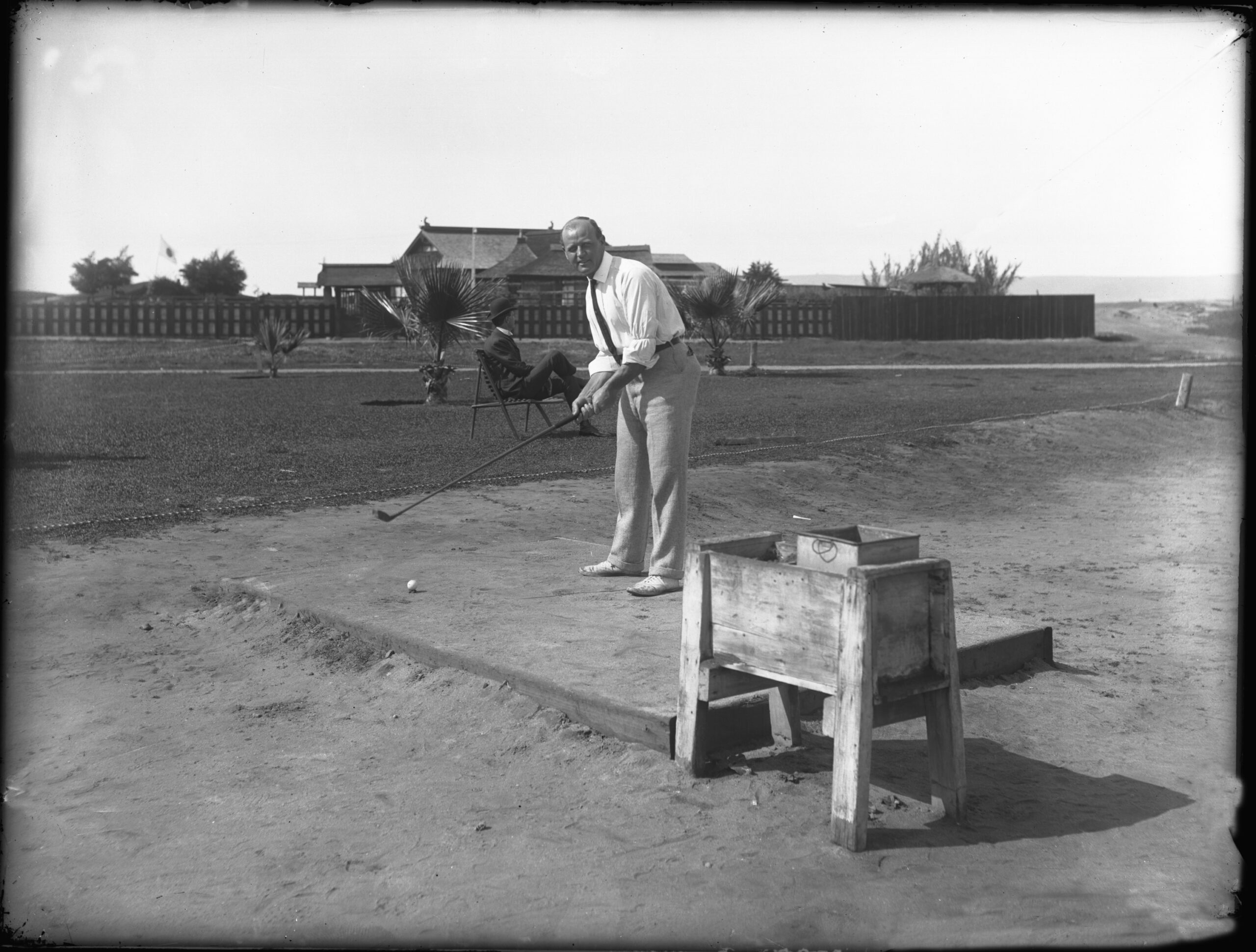by Forrest Richardson, ASGCA, Golf Course Architect
 Scottish golfer Alex Smith golfing at Coronado Golf Course | San Diego History Center c. 1905
Scottish golfer Alex Smith golfing at Coronado Golf Course | San Diego History Center c. 1905
The term ‘Tee Box’ has been widely accepted by modern golfers to mean the typically level surface at each hole where play begins. We also refer to these as just ‘tees,’ and if you’re involved closely with the USGA and R&A you might officially refer to them as ‘teeing grounds,’ which more specifically is a defined area on each tee that is measured based on the placement of tee markers. Actually, the term ‘tee box’ has its roots not so much in this modern use, but one far more direct and obvious. Let us take a brief history trip.
As a golfer in 1744 you would have been required to “…Tee your Ball within a Club’s length of the Hole” to begin play on the next hole. That directive was embodied in the Articles & Laws in Playing at Golf as set forth by Leith Links in Edinburgh, Scotland, among the first golf rules ever published. A golfer of that time would form a raised area of turf with a small pile of soil or sand upon which to place their ball for hitting. Or, they may dig a club into the ground to form a raised area on which to place the ball. Both of these advents — termed ‘teeing’ — made it easier to hit a golf ball at the start of each new hole. The word ‘tee’ could well stem from the Dutch word ‘tuitje’ (pronounced tytee), which means a little conical shape. Hence its possible connection to small piles of sand that eventually became the preferred method of ‘teeing’ a golf ball at the start of each hole.
We are not sure when, but certainly by the 1800s, it was popular for courses (at both links and those inland) to provide a wooden box in which sandy soil was kept handy for golfers to use to form these small ‘tees.’ This, by all accounts, is the first logical use of the term — tee box. Literally, a box for the purpose of helping to tee your ball. A ‘tee box’ became the place at which play would begin at each new hole during a round.
In the late 1800s we began to see replacements for the sandy soil used for teeing a ball. In 1889 two chaps named Bloxsom and Douglas received a British patent for “An Improved Golf Tee or Rest” consisting of a rubber platform on which to tee a ball. Later in 1892, the first invention that was designed to be stuck into the ground (a metal spike with rubber) was called “Perfectum,” a patent of Percy Ellis. Then, in 1899, George Franklin Grant received a patent for an “improved golf tee” that was made all of wood. The issue? Grant’s design was flat on the top, requiring careful balancing of the ball so it would not fall off. Finally, Dr. William Lowell Sr. later perfected the wooden tee with his Reddy Tee design in 1925. That famous patent added one small but important detail — a concaved top that kept the ball from toppling off the wooden peg. Lowell’s concept is still at play more than 100 years later, resulting in millions of wooden tees being produced each year.
So, that is the history of the tee. But what about the term ‘tee box’ as it is commonly used today? For this we go back to the actual ‘box’ full of sandy soil used to perch a ball at the start of each hole. Once the replacement devices caught on — especially those wooden tees — the physical boxes remained in use at courses for other reasons. First off, the boxes were often painted with the hole number and yardage, so retaining this practical benefit at courses was obvious. It also became customary for broken wooden tees to be tossed into these boxes to be re-used. And, there were undoubtedly many golfers still using the old way of teeing a ball for many years even after wooden tees became popular. Thus, at many courses, boxes of sandy soil remained at hand. Later on, and even today, we see physical boxes at tees (especially par-3s) with divot mix for filling divots to help keep teeing surfaces level and in better shape.
This all brings us to a modern interpretation of ‘tee box’ term, which is to convey the often rectangular shape of tees on courses and even tees that are anything but rectangular in shape. Just as the pursuit of level tees is on the minds of today’s players, it was just as important in years past. A level tee allows for better stance and thus a better swing and hit. Early in the 1900s we have evidence of a mostly American construction technique where a wooden platform — a rectangular ‘box’ — was formed as a teeing area for golf holes. These ‘tee boxes’ were typically about ten to fifteen feet in dimension and filled with soil. The edges of wooden planks helped to keep the surface level. Each day these ‘boxes’ would be smoothed and compacted. It is certain that the term ‘tee box’ was kept alive as a result of this innovation.
What was once a term to denote a wooden box at the start of each hole has drifted through generations. From a box to a platform, and now to something far different. Today the term is held close to our golfing hearts as an important part of every course. The ‘tee box’ is how we refer to that flat area we walk up to, stand upon and look out to contemplate the challenge that lies ahead. Finally, we swing and make our way toward the green.
